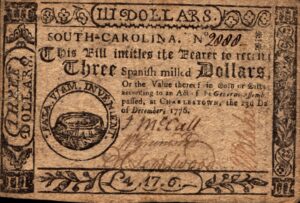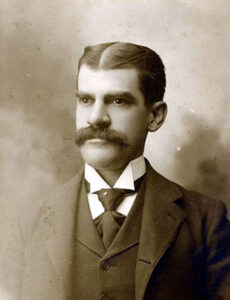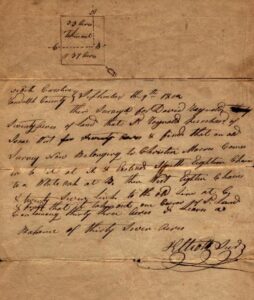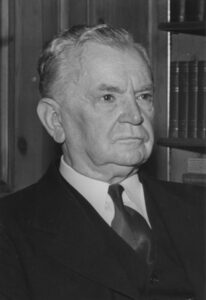In 1915, only a few years before the start of World War I, Walter Clinton Jackson, the head of the History Department of the State Normal and Industrial College (now UNC Greensboro), decided to create a campus Historical Museum, which would house important “relics of the state.” These artifacts were meant to reflect the industrial, cultural, and military history of North Carolina, and provide the students with a direct link to their state’s past.
One of the most important inspirations and supporters of this museum was Colonel Frederick Augustus Olds, who visited the college in December of that year. Colonel Olds was the “Field Collector” for the Hall of History in Raleigh. Olds traveled throughout North Carolina collecting artifacts, and owned a large personal collection of historic material. When the Hall of History was established in 1902, Olds donated his sizable collection and became its first director.*
It was during a visit to Raleigh in the spring of 1914, that the idea for a college museum took root at the State Normal. On the invitation of Colonel Olds, Dr. Jackson’s North Carolina History class visited the Hall of History, and the students’ interest in their state was ignited! Recognizing the young women’s enthusiasm for his collection, Olds donated a large and valuable assortment of Native American artifacts, to help the college start its museum.
Olds came the State Normal campus in December 1915 to help the students start their campus museum. He proved to be a charming and talented speaker, regaling the young women with interesting and romantic tales from North Carolina’s past. Olds’ visit was a special one for the fledgling museum, as he to become a major patron, donating many items from his personal collection to the college.
Originally, one of the classrooms in the Administration Building (now the Foust Building) was designated for the museum. Exhibit cases were filled with local artifacts and heirlooms, and the walls were lined with maps and historic pictures. Depending primarily on gifts from students, faculty, and local collectors, the little museum displayed Confederate uniforms and period clothing, old guns and other “relics of war,” furniture, land records, diaries, and correspondence. Students described the museum’s contents as ranging “from a tuning fork to the pearls off of Sir Walter Raleigh’s coat!”
The collection eventually grew to over 1,000 items, including reproductions of historic documents, which could be handled by the students in the course of their studies. One such document was a copy of a 1713 treatise between the state of North Carolina and the Tuscarora Native Americans, assuring the official recognition of their tribe. Another treasure was a copy of a 1788 “challenge to a duel” signed by President Andrew Jackson, which resulted from a dispute over a court case. Other prized possessions included Babylonian votive tablets, which had decipherable writing dated to 2350 BCE. These tablets were donated by noted archaeologist, Dr. Holt after lecturing at the college. The collection also boasted Continental and Revolutionary currency, as well as a large collection of Confederate notes. Indian arrowheads were also in abundance.
The museum was still accumulating material in the 1930s, and it had moved its location to the Carnegie Library (now the Forney Building).Through the decades, the museum was to add to its collection, including the school’s “Service Flag,” with stars representing the students’ family members who had enlisted in World War I, local quilts and textiles, and a small science-based collection. When students from the Science Department traveled to Beaufort, North Carolina, to do research on marine life, the class contributed items that they had collected on the shore to the museum.
In 1933, a fire at the library where the museum was housed damaged or destroyed many of the artifacts. At that time, it seems that much of the material was packed and stored in the attic of the Administration Building. In 1949, as Dr. Jackson, now the College’s Chancellor, made plans to retire, he decided to disperse the remnants of the College Museum for preservation and safe keeping. A committee was formed and over 100 items were inventoried and divided between the Home Economics Department’s “Costume Collection” and the Library. Other items were given away. From the material that was transferred to the Library, only a small box of documents remains. It is now part the Manuscripts Collection in the Martha Blakeney Hodges Special Collections and University Archives. The box includes a few letters, broadsides, pamphlets, currency, stamps, and land records. The rest of the items that were transferred to the Library are lost.
*The Hall of History became the North Carolina History Museum in 1965.
By Kathelene McCarty Smith



